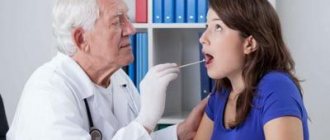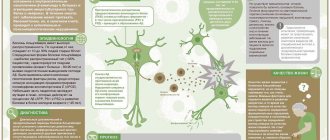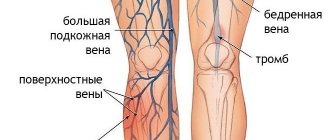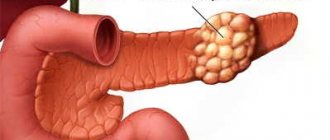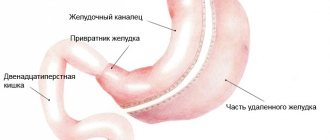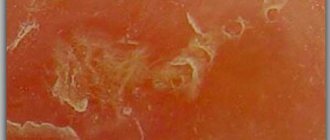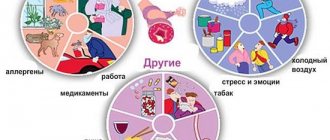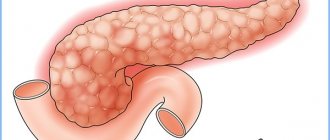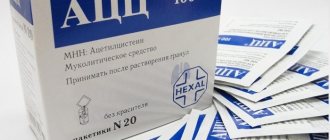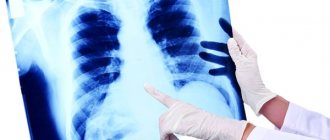Typically, a concussion is the result of a mechanical impact on the head, such as a strong blow to a hard surface. Despite the fact that when examining the head with any of the neuroimaging methods, changes in the white matter are minimal and often go unnoticed. Signs of a concussion in an adult will be visible on the face: dizziness, nausea, vomiting, sometimes loss of consciousness, etc.
It is important to understand that treatment of a concussion must be carried out under the supervision of a specialist, since if the patient is not properly cared for, the situation may worsen. In this regard, everyone should know the main symptoms and signs of a concussion, both in a child and an adult, because the success of treatment depends on how quickly and correctly medical care is provided.
Pathogenesis
The following mechanical factors influence most of all - fixation of the head at the time of the concussion or it was in motion, the second moment is associated with an increase in intracranial pressure, which causes transient ischemia (oxygen starvation) of the brain.
All this causes various biochemical and biophysical changes in cells, which are often reversible. There are also symptoms that are combined into post-concussion syndrome - dizziness, headaches and various manifestations of apathy and depression.
For various brain injuries, transcranial micropolarization of the brain is very effective.
Every third person in the world has signs of pituitary adenoma, but do not despair. It is better to familiarize yourself with the methods of treating the disease.
Complications
If left untreated, post-concussion syndrome develops in case of injury. This is a set of symptoms for a mild concussion that occurs several months after a blow or bruise. Among the complications observed:
- Migraine-like headache.
- Dizziness.
- Sensitivity to light and loud, sudden sounds.
- Tinnitus.
- Double or blurred vision.
- Sleep disorders.
- Unstable psycho-emotional state.
- Impaired concentration.
- Difficulties in learning new information.
- Forgetfulness.
There is no special treatment in this case, but based on many years of research, the effectiveness of anti-migraine medications has been proven. Antidepressants and psychotherapy are also used.
When diagnosing a mild concussion, the attending physician will decide what to take based on the condition and individual characteristics of the patient’s body. Self-medication can cause serious complications in the future. That is why, if you suspect an injury, you should contact a specialist.
What are the signs of a concussion?
What are the symptoms of a concussion?
The main signs of a concussion in adults:
- Almost always, during SGM, a person loses consciousness. The stronger the damage, the longer the period of fainting; in extreme cases, coma occurs.
- The manifestation of disorientation, memory is also impaired. The duration of the period of memory loss can also be used to judge the damage received.
- Nausea, vomiting, pallor, dizziness and headache, ringing in the ears, blurred vision, increased breathing - all these are also signs of a concussion. The condition of the eyes can also tell a lot - constricted or, conversely, dilated pupils are a sign of a concussion, as the nerve pathways responsible for vision are disrupted. Also, by the reaction of the pupils to light, one can judge the degree of concussion - they react sluggishly - a weak concussion, they do not react - a severe concussion. If only one icon reacts to light, one of the cerebral hemispheres is damaged.
Loss of consciousness, nausea and vomiting are always the first and main signs and symptoms of a concussion.
Based on the duration of symptoms, three degrees of SHM are distinguished:
- Mild - the patient is unconscious for no more than 5 minutes. Signs and symptoms of a mild concussion: pale skin, decreased or absent muscle tone in the arms and legs. The heart rate may either increase or decrease. Some people vomit.
- Average - loss of consciousness from 5 to 15 minutes. Disintegration of consciousness, retrograde amnesia, nystagmus (shifting eyes), nausea and vomiting, headaches and dizziness, adynamia and asthenia are observed.
- In case of loss of consciousness for a period of more than 15 minutes or falling into a coma, a severe degree of SHM is stated.
Delayed symptoms are symptoms that appear weeks or even months after the injury. These include:
- compressive headache, which usually appears a week and a half after the injury, less often after a month;
- causeless dizziness;
- fatigue developing into asthenia;
- irritability;
- increasing memory and attention disorders;
- causeless feeling of anxiety, aggressiveness, tearfulness;
- loss of hearing, vision, appearance of extraneous noise;
- stress resistance decreases, a craving for alcoholism appears;
- disorder of sexual functions.
Treatment of concussion
Regardless of whether the damage seems minor, you need to take the victim to the hospital. Patients experiencing an acute period of pathology are treated in the neurosurgery department. The most important aspect is compliance with bed rest.
Based on the clinical course, the recommended rest time may be increased. If there are no complications, the victim is discharged from the hospital after about a week, but outpatient treatment should last up to 2 weeks.
After such an injury, a person needs normal rest and sleep, avoiding stress of any kind (including those associated with mental overload), especially during the first few days.
If the victim did not self-medicate, did not ignore the doctor’s recommendations, and treatment was started in a timely manner, in the overwhelming majority of cases the situation ends in complete restoration of health and return to working capacity.
At the same time, some patients experience some residual effects of the concussion over a long period of time.
The most frequently noted among them are:
- increased irritability and fatigue;
- deterioration in the ability to concentrate;
- memory problems;
- depressive disorders;
- sleep disorders;
- headaches.
Headaches are the main symptom of a concussion.
The described manifestations usually soften after 12 months from the moment of injury, but in rare cases they persist, continuing to manifest themselves throughout life.
Drug therapy is considered secondary, but it is prescribed to all victims for the purpose of speedy recovery, general health promotion, leveling symptoms and preventing possible complications.
Features of concussion in children
Infants are characterized by more frequent regurgitation, and loss of consciousness is not observed at all. Increased excitability may be observed, sleep may be disturbed, and increased pallor is characteristic in the first minutes after the impact.
After an injury, preschoolers more often experience “adult” symptoms such as loss of consciousness, nausea and vomiting.
The child has a headache, the pulse may become faster or slower, there are jumps in blood pressure, sweating and pallor.
Sleep disturbances, tearfulness and moodiness may also occur.
Some children experience post-traumatic blindness - immediately after the injury or later, loss of vision occurs from a couple of minutes to several hours - then it goes away on its own. The nature of this disorder is not clear.
It is worth remembering that in children the body’s compensatory capabilities can suppress the manifestation of symptoms for a long time, but then the picture worsens sharply. The child may fall during the day and only in the evening the symptoms will begin to increase.
Read more about the symptoms of concussions in children in our article.
The first signs and symptoms of a concussion in children that parents should know As we all know, the child’s body is very mobile. Rarely do children develop without receiving blows and bruises and abrasions. Among all types of injuries, the first...
Treatment
Treatment of a concussion lasts from 10 days to a month.
Treatment at home is only possible for minor head injuries with the permission of a doctor. When treating at home:
- bed rest and long sleep;
| Protection! | |
| A helmet helps reduce the risk and severity of an impact and can save you from skull fractures. Important! Remember that a helmet will not prevent a concussion. | |
- listen to music (but not through headphones), reading is not recommended; - use sedative folk remedies or light herbal infusions; - long-term dairy-vegetable diet with limited salt intake.
IT IS FORBIDDEN
- watch TV, videos, play on the computer, Gameboy or Tetris - flashing frames irritate the brain; - exercise.
First aid
First, be sure to consult a doctor who will select the most suitable course of treatment for you.
For at least the first 2-3 days, bed rest.
The best cure for SHM is sleep ; if you have problems with it, you can take sedatives based on valerian and motherwort.
You also need to reduce the load on the brain - you should stop reading, working on the computer and watching TV for a few days.
You should also avoid bright lighting - curtains on the windows and a night light in the evening will help you with this.
A common consequence of SHM is cerebral edema - to prevent it, it is recommended to drink less , leave mineral water from the drink, and exclude coffee and tea. In your diet, you should stick to fermented milk and vegetables; citrus fruits, bananas, and walnuts are useful.
Avoid household chores, physical activity and driving for two weeks.
Diagnostics
An accurate diagnosis is made by a traumatologist based on the existing signs of a mild concussion and the results of the examination.
First of all, the doctor conducts an external examination, finds out the circumstances of the injury, and checks the reflexes. If a more severe injury is suspected, the patient is referred to a neurologist. To establish a diagnosis, the following diagnostic methods are prescribed:
- Radiography.
- Spinal tap.
- CT and MRI.
- Electroencephalography.
- Echoencephalography.
Doctors use the Glasgow scale to determine the severity of a brain injury. The essence of diagnosis is to conduct several tests, on the basis of which each patient is given a certain number of points from 3 to 15, depending on the reaction.
A mild concussion is diagnosed in cases where the doctor establishes a score of 13 or more on the Glasgow scale. Based on all studies, examination and observation, the specialist determines whether there is a risk of complications.
Consequences
It is worth noting the following consequences:
- Some patients experience clouding of consciousness when drinking alcohol or getting infected (for example, with the flu).
- Headaches that worsen with physical exertion or certain bends of the body. There may be a rush of blood to the head followed by paleness, accompanied by sweating.
- Loss of ability to concentrate and very easy fatigue.
- Uncontrollable outbursts of aggression, after which the patient experiences awareness and remorse for what he has done.
- Convulsions similar to an epileptic seizure may appear.
- The appearance of paranoid qualities - constant anxiety, fear, worries about any reason. This leads to insomnia and general personality degradation.
Read more about the consequences in our article.
Consequences and complications after a concussion - psychosis, parkinsonism and others. A concussion is a violation of the integrity of the bones of the skull or soft tissues. An accident can happen to a person in which...
Consequences and complications
How long it takes for clinical manifestations of injury to pass depends on how timely treatment measures were started. This also affects the possibility of complications. Among the most common consequences are the following:
- Epilepsy. After a concussion, the risk of seizures doubles.
- Long-term impairment of brain activity with a history of several concussions. If this is not the first time a person has encountered such an injury, the latest concussion causes longer-term disturbances in brain activity than in previous times, and in some cases, irreversible changes.
- The development of post-concussion syndrome - headache, dizziness, impaired logic and thinking - manifestations that can become chronic.
- Death. A person can die if he receives a second concussion during a period when the symptoms of the first have not yet disappeared. After injury, the brain should recover, but if the injury is repeated, fatal swelling of the organ develops, which can be fatal.
Although a concussion is considered a non-dangerous injury, the consequences of which are easy to stop, it is not recommended to underestimate the risk of complications. How dangerous the consequences can be depends on the characteristics of the body, the timeliness of providing first aid and qualified assistance. Therefore, if you could not avoid injury, you should not self-medicate, but urgently consult a doctor.
Injury Prevention
You need to remember that:
- When playing contact games or rollerblading, cycling, skating, skiing, or skateboarding, wear a helmet.
- If you like to engage in martial arts, pay due attention to head protection.
- When driving a car, buckle up.
- At home, think over the situation so that you do not trip over interior elements or these elements do not fall on you. Do not block passages in rooms and corridors along which you move in the dark.
- Use caution in situations where there is a risk of traumatic brain injury.
Remember! If you, or someone close to you, has an unfortunate fall or hit your head hard, do not let this incident happen - consult a doctor . If everything is fine, then you can sleep peacefully; if not, then you can avoid all the consequences described above.
And do not pay attention to the thoughtful statements of the learned neighbors - you got a concussion, now you will suffer from headaches to death - with timely treatment, after a year, headaches are observed in only 1% of patients.
Symptoms and signs of brain contusion
By brain contusion we mean a closed-type TBI, which entails damage to organ structures. The pathology is a consequence of domestic, criminal, industrial, road transport sports or childhood injuries.
The condition is characterized by the formation of areas of necrosis in the tissues of the central nervous system.
The stimulator of negative processes is a change in the position of brain formations, a hydrodynamic shock to tissues, and displacement of an organ.
Symptoms of brain contusion depending on the severity:
- mild degree – loss of consciousness, which occurs in 100% of cases and lasts at least 2 minutes. Also, a mild bruise is accompanied by headache, amnesia, vomiting, dizziness, and a slight increase in temperature. Upon examination, a slight disturbance in cardiac and respiratory rhythm, nystagmus, and different pupil sizes become apparent. Often the picture is supplemented by meningeal symptoms in the form of stiff neck and failure of a number of reflexes;
- moderate degree - loss of consciousness for at least 10 minutes, signs of deep stupor and lethargy, deeper amnesia, headache, repeated vomiting. Respiratory and heart rhythm disturbances are pronounced, but may have a different clinical picture. Depending on the characteristics of the case, tachycardia and a noticeable increase in blood pressure or slowing of the pulse are possible. Neurological symptoms are pronounced and are accompanied by low-grade fever;
- severe degree - loss of consciousness lasts for hours and even days. Coma gives way to stupor. This degree of brain damage is accompanied by damage to the cardiovascular center, which is manifested by a serious disturbance in heart rhythm. Obviously pathological breathing, temperature rise to critical levels. The basic neurological picture is accompanied by a bilateral change in the shape of the pupils, signs of impaired sensitivity, motor activity, and reflexes.
In severe cases, loss of consciousness lasts for hours or even days.
Early diagnosis of brain contusion is the key to a favorable outcome of the injury. Even with a blurred clinical picture, pathology can be accompanied by phenomena that are dangerous to the health and life of the patient. TBIs of this type often occur with cerebral edema, focal hemorrhages, damage to the meninges, and the initiation of inflammatory and destructive processes in tissues.
Causes of injury
Our brain is protected by a hard skull, and despite this, this injury is the most common. Therefore, you need to know what causes a concussion, symptoms, treatment and possible consequences of this problem. So, during sudden movements, falls, traffic stops, jolts and blows, our brain hits the bone, receiving injury of varying severity. This usually happens during an accident or when falling from a bicycle or other means of transportation. Athletes also often suffer similar traumatic brain injuries. But such incidents happen both at home and at work.
How does a concussion occur?
With a strong impact, the head moves in space, the brain, by inertia, hits the hard skull. Inside, it is filled with white matter, which consists of many processes (axons) coming from each neuron. At the moment of impact, the gray and white matter shifts, the axons change, shift and twist. Damage to them leads to the death of the neurons to which they are attached, which leads to irreversible brain damage. In addition, due to a strong blow, injuries to the skull bones and soft tissue bruises occur.
Children are considered the most at risk. In children under one year of age, injuries occur due to parental inattention. A child over 2 years old is vulnerable due to constant activity and lack of fear of danger. At this age, it is important to limit restlessness, because even a minor injury received in childhood creates negative preconditions for deteriorating health in the future.
How long will it take for full recovery?
The period of rehabilitation and restoration of working capacity lasts from 2 to 6 weeks and depends on the degree of concussion, timeliness of seeking medical attention and the general health of the victim.
Residual symptoms such as insomnia, dizziness, fatigue, and confusion last from 6 to 12 months, then disappear completely. If a person received a more serious injury or neglected the doctor’s recommendations, recovery can last up to six months and be accompanied by the development of complications such as epilepsy.
What is the danger?
Statistics show that concussion is a fairly common injury, even in everyday life, not to mention hiking, boxing or cycling. A significant part of such injuries end well and are not accompanied by neurological and other complications, however, if a person has a weakened immune system or has long-term illnesses, in 3 cases out of a hundred a concussion leads to disability. The procedure for treating concussions is outlined below.
The most dangerous concussion occurs in children. Children acquire all skills and experience thanks to an increase in the number of neurons. If something bad happened to a child, and part of the brain was bruised, then he may lose the ability to remember information well, learn and develop. For an adult, this is not so critical, since he has already acquired all the necessary skills and knowledge, unlike a child.
Young children's brains are tiny and soft. Concussions in newborns are common. Rocking your child to sleep or throwing him up can cause serious brain injury, which will entail negative consequences.
Both adults and children should immediately consult a doctor after a blow or sudden movements of the head that cause pain. The biggest risk is the development of a hematoma, which will compress the brain and the person may die. A hematoma develops as a result of intracranial bleeding; its growth period can last up to one or two days.
The greatest risk of developing a hematoma is in older people who take blood thinner pills. However, children and adults are no exception. Removal of blood accumulation is carried out only surgically in emergency mode. That is why after a concussion you should immediately consult a doctor without fail.
How long is the recovery period?
Despite the apparent ease of a concussion suffered “on your feet,” more than a third of them lead to the same complications as severe forms of injury.
Therefore, even if you quickly return to work, do not be lazy during the year to avoid unpleasant consequences, see a neurologist, and even better, if you can, consult a homeopath.
Upon completion of the acute period, treatment is continued using antidepressants, nootropics, and adaptogens ( Eleutherococcus, Rhodiola rosea, Schisandra, Aralia, Zamanika, Leuzea ).
With high blood pressure, the dose of adaptogens is selected very carefully, preferably under the supervision of a doctor.
Vitamin therapy courses include complivit, undevit, alphabet, milgamma , although, of course, live ones are preferable - mountain ash, currants, rose hips, citrus fruits. Individual herbal mixtures are selected against concomitant diseases.
After the acute period, Tramosan should be taken for six months to a year in courses of 5 weeks, followed by a 10-day break (5 grains 3 times a day). A similar course of arnica tincture (5-10 drops 3 times a day) is also useful. It’s good to alternate courses of Tramosan and arnica.
As a result of injury (more often in older people), increased intracranial pressure develops. Helleborus 3 helps (5 grains under the tongue 3 times a day before or an hour after meals). Course - 5-7 weeks. Rhododendron 3 relieves meteopathic reactions (the technique is similar to the previous one).
What is a concussion and under what circumstances can you get one?
Our brain, the control center of the body, is placed in a liquid called cerebrospinal fluid. This liquid acts as a shock absorber and protects against slight shudders. In addition, this organ is surrounded by a hard skull. The fluid is located between the inner plate of the cranial bone and the brain.
A concussion is a movement of this organ, which consists of its contact with one wall of the skull and a repeated inertial impact against the other wall. In this way, the brain is injured by its own protective shell both times. In addition, there are damages when the brain does not touch the walls of the skull, but rotates around its axis inside.
The danger is that even with a minor impact, and even more so when the brain is rotated, neurons are damaged. Axons, the main component of white matter, are the so-called “myelin wires”, which carry the function of transmitting brain signals.
During a shock, some of the axons may be damaged (in most cases they are torn). If an axon is damaged, it releases a toxic substance that kills the neuron.
The death of a neuron is an irreversible process. If most of the neurons in a certain place die, then we can talk about the death of part of the brain.
Such damage entails serious consequences. They can be expressed in hearing loss, the ability to speak, perceive and analyze information, as well as memory loss; it all depends on which part of the brain is damaged.
In most cases, a concussion is a minor injury that can be healed without consequences. However, its outcome should not be neglected.
A concussion can be caused by a blow from a heavy, blunt object; when falling, if you hit your head on a wall or floor; when suddenly turning the neck down, up or from side to side; in car accidents and other accidents.
Treatment with folk remedies at home
To speed up treatment, traditional medicine is often used. For example, aloe, the juice of which is added directly to medicines. Also good for stimulating blood circulation are string, St. John's wort, and ginseng. But the best treatment at home will be recommended by a doctor, since a combination of herbs in combination with basic medications is possible. If the patient has apathy, you can drink valerian or motherwort.
Homemade ingredients that work well include honey, cabbage and potato juice, and flaxseed oil. In addition, the diet must include nuts and dried fruits. Meals should be varied, but not heavy.
It is necessary to completely eliminate caffeine, alcohol and nicotine, eat more fruits (especially citrus fruits) and drink a lot of clean, still water.
to contents ^
How to provide first aid to a victim
Approximately 80% of head injuries result in a concussion, and no one is immune from it. Even a book just falling from the top shelf can have a detrimental effect on a person who focuses his attention on the contents of the lower shelves.
You should immediately call an ambulance, especially if the damage is visible externally. The victim is placed in a flat horizontal position. There are no suspicions of injuries to the neck, spine and hips? This means that you can move a person to the fetal position - turn the body and head to the right side, bend the knees (or only one knee). This way, the person will not suffer from possible tongue retraction, excessive salivation, blood, or vomiting.
Attention! External bleeding injuries must be treated immediately, stop the bleeding, and apply a gauze bandage.
Disease prognosis
If the patient follows all the doctor’s recommendations, the bruise will not leave complications and will result in complete rehabilitation. However, patients who do not adhere to a healthy lifestyle may experience symptoms such as insomnia, migraines, inability to look at bright lights, decreased attention, memory, anxiety and depression for a long time.
That is why assistance for a concussion should be provided in a timely manner, and rehabilitation should be prescribed by the attending physician. You cannot initiate treatment or try to treat yourself. This can make things even worse.
to contents ^
Consequences of trauma in adults
Symptoms of a concussion appear within minutes of a head injury. Depending on the severity of the condition, the victim’s consciousness is impaired or he faints. The pathology is characterized by nausea, intense headaches, dizziness, possible single vomiting, changes in pulse and breathing.
The patient often experiences problems with coordination, orientation in time and space.
Such manifestations quickly subside after the start of therapy and can disturb from several days to a couple of months. In a fifth of all patients, symptoms may persist longer than this time, which is usually the result of external factors influencing the body.
Possible negative consequences of a concussion in adults:
- preservation of cephalalgia, change in its character;
- the appearance of irritability, nervousness, aggressiveness;
- fatigue associated with sleep disturbances, difficulty falling asleep;
- decreased concentration, problems with assimilation of new information;
- deterioration in general health - some patients say that their neck hurts, others indicate a lack of appetite or mood swings.
You may have trouble falling asleep.
Long-term persistence of the clinical picture or the appearance of additional symptoms is most often observed in people over 55 years of age. Also, the speed and quality of recovery can be affected by factors such as smoking, alcohol consumption, the presence of concomitant pathologies, and chronic stress.
Traditional medicine recipes
Treating a concussion at home may include folk remedies. Many recipes can improve brain function and restore cell performance. The most effective of them:
- a decoction of chamomile and medicinal lemon balm. Measure 10 grams of each ingredient, pour a glass of hot water, leave for 10-15 minutes. Take 150 ml 2 times a day;
- thyme decoction. Well crushed raw materials - Art. spoon, pour a glass of hot water, leave for half an hour. Dosage – 3 times/day before meals;
- infusion of field St. John's wort. Place 2 teaspoons of dried herbs in an enamel bowl, add 200 ml of plain water, bring to a boil, filter. Take 3 times/day, ½ cup;
- juice from fresh potatoes. Grind the vegetable tubers and squeeze out the juice. Dosage – ½ glass/day for 10 days after the injury;
- raisins, pistachios, sweet figs. Combine one part each of nuts and raisins, 2 parts of the last ingredient. Grind the resulting mixture well, this is done in a blender. Take ½ cup of prepared, delicious, nutritious dessert every day;
Traditional medicine recipes effectively restore brain function after a concussion. Natural remedies have a cumulative effect, so they can only be used as part of complex therapy and for a long time.
Chamomile and lemon balm decoction. One of the traditional medicine recipes
Treatment methods should only be prescribed by a doctor, taking into account the patient’s well-being and the presence of other concomitant diseases.
What examinations does the doctor perform?
To understand whether a mild concussion is present or not, a traumatologist or surgeon conducts a diagnosis. Which will help determine a concussion and whether treatment is possible at home.
As a rule, examinations consist of the following activities: computed tomography, fundus examination, encephalography, x-ray of the cervical vertebrae and skull bones.
This way, it will be clear how serious the injury is and appropriate treatment will be prescribed.
to contents ^
